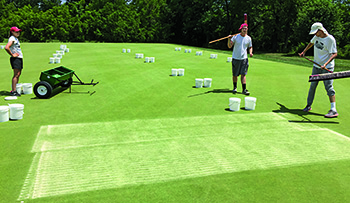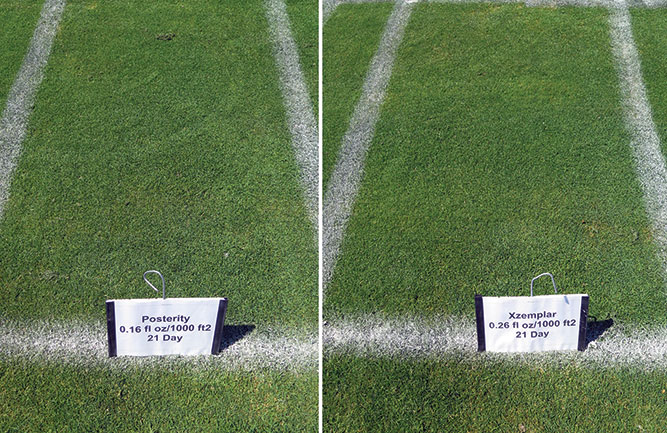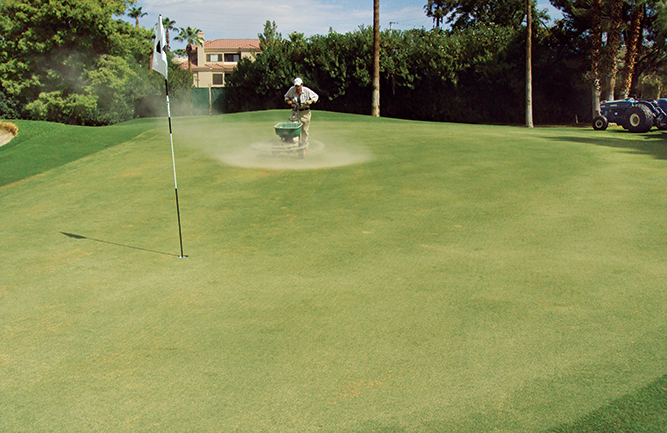Removing coarse topdressing sand from greens

Application of sand topdressing treatments. (Photo: Hui Chen)
Superintendents use topdressing to manage thatch accumulation and maintain smooth putting green surfaces. However, they often avoid topdressing during the growing season because residual coarse sand may interfere with play and dull mower blades.
A field study was initiated in May 2016 on 20-month-old Shark creeping bentgrass (Agrostis stolonifera) turf to determine the effects of 0.5-mm sand topdressing (lacking coarse and very coarse sand) and core cultivation on the surface physical properties of putting green turf. Evaluated factors were sand size (medium-coarse, medium-fine or fine-medium) and rate (50 or 100 lbs./1,000 sq. ft./2 weeks) of topdressing and cultivation (noncored or cored plus backfill of coring holes with medium-coarse sand twice per year).
We measured volumetric water content (VWC) of plots at the 0- to 1.5-inch depth zone on 70 dates from May to October 2018. The effect of sand topdressing size on VWC depended on whether plots were core cultivated. Without core cultivation, the VWC of plots topdressed with fine-medium sand was 3.5 percent to 8.4 percent greater than plots topdressed with medium-coarse or medium-fine sand. Core cultivation greatly diminished this difference among sand sizes; VWC among sand sizes was statistically similar on 40 out of 70 measurement dates.
When we observed differences among plots topdressed with fine-medium versus medium-coarse and medium-fine sand, VWC was different by only 1.1 percent to 3.2 percent. Thus, core cultivation and backfilling of holes with medium-coarse sand was effective at producing a drier surface.
Topdressing with medium-fine sand resulted in a similar surface wetness as topdressing with medium-coarse sand and greatly reduced the amount of sand removed with mowing. Topdressing with the fine-medium sand also reduced interference with mowing but produced a much wetter surface because of the substantial increase in fine and very fine particles in the mat layer.
Hui Chen and James Murphy, Ph.D., are at Rutgers University. You may contact Hui Chen at hc508@rutgers.edu for more information.












